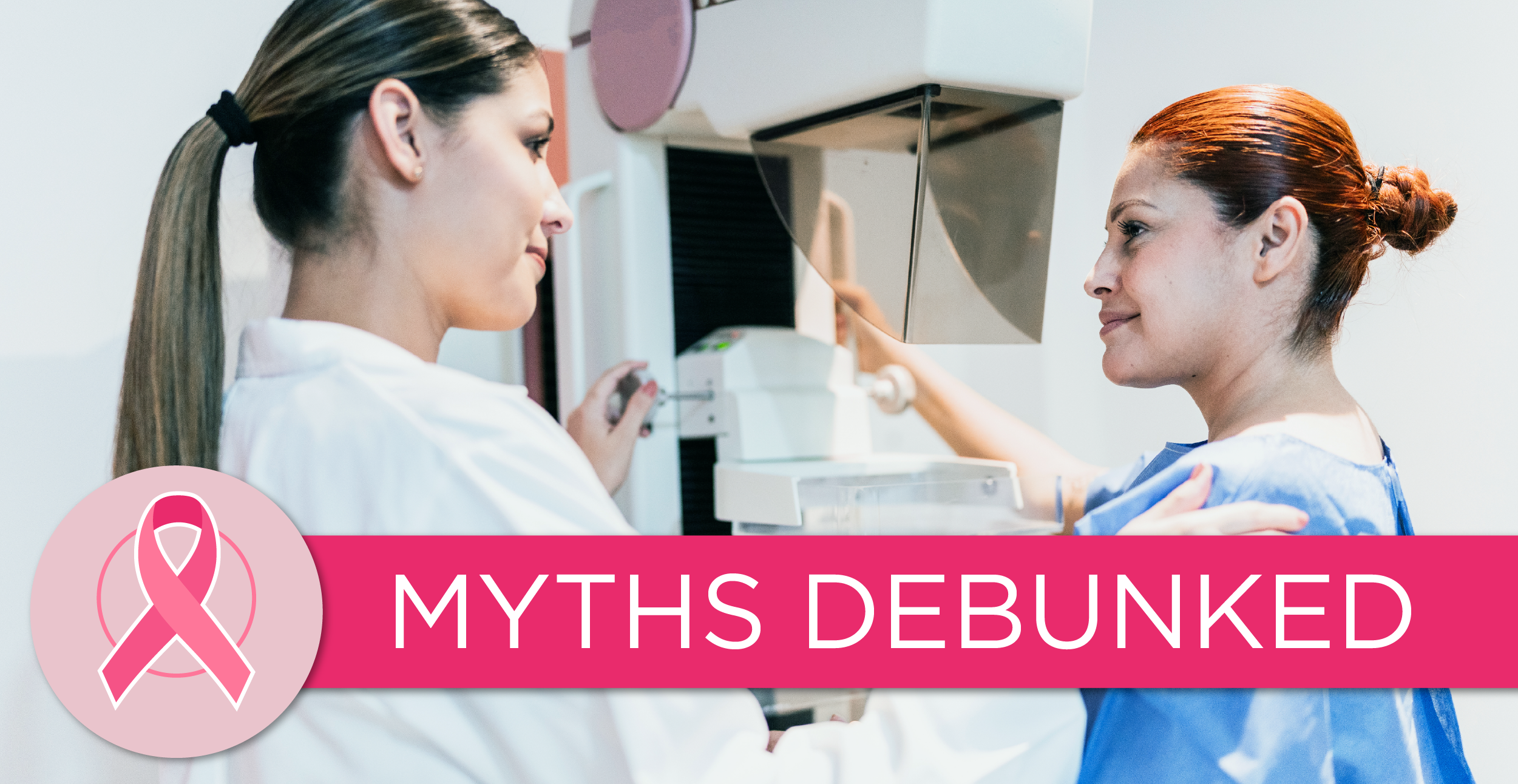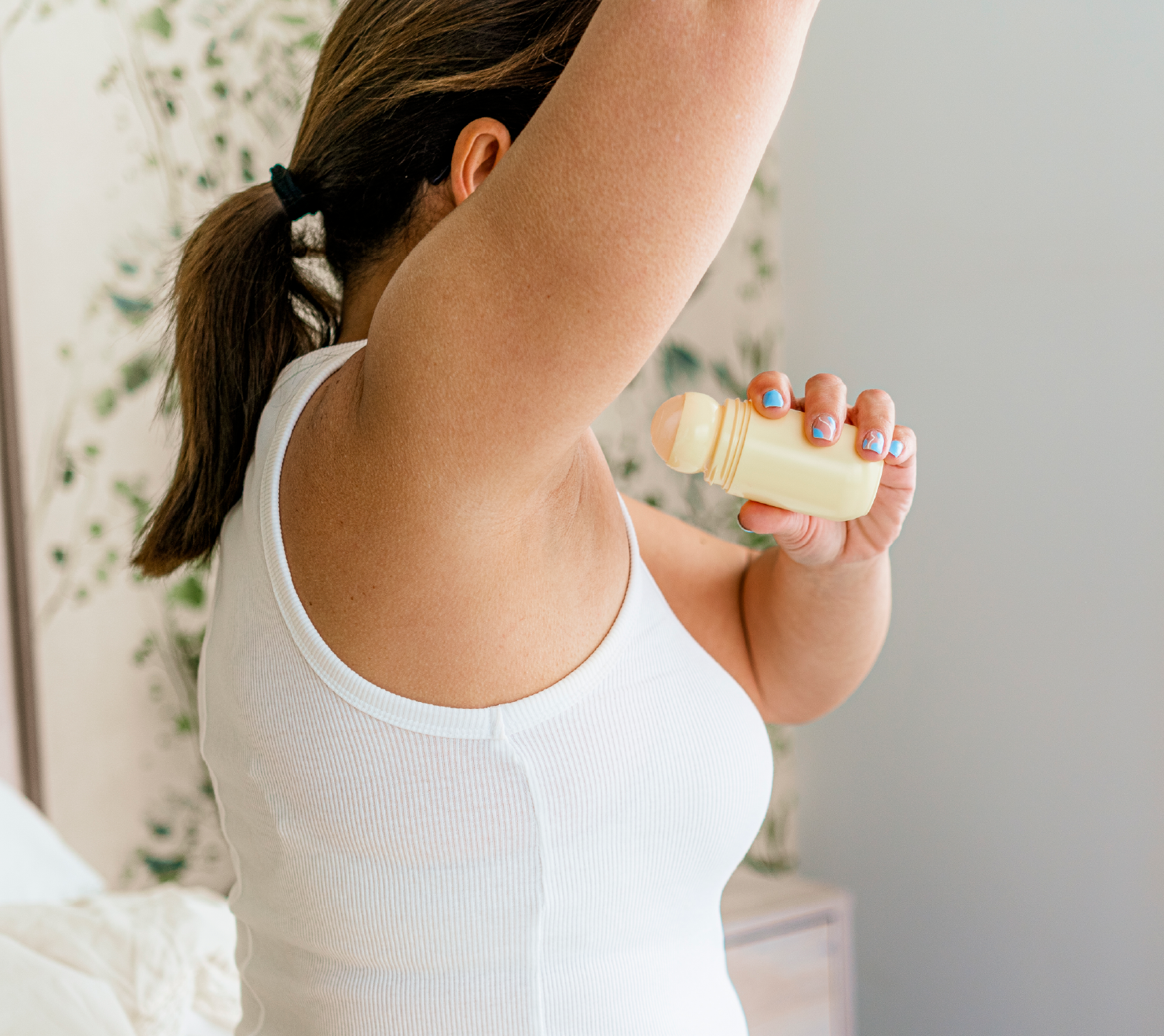
October 15, 2025
The Truth Behind Common Breast Cancer Misconceptions
Breast cancer accounts for 1 in 3 new cancer cases in American women every year. Despite how common breast cancer is, many misconceptions about what causes it, what its symptoms look like and more still circulate. This Breast Cancer Awareness Month, Coryell Health is here to help you separate fact from fiction by debunking 10 common myths about breast cancer.
Myth #1: Putting your phone in your bra can cause breast cancer.
Fact: In reality, keeping your phone in your bra does not cause breast cancer.
“Just like smart TVs and microwaves, our cell phones emit radio waves, which are too weak to damage DNA and cause cancer,” says Coryell Health family medicine physician Dr. Zoe Walker. “While scientists do continue to monitor cell signals for possible long-term health effects, studies have shown no link between cell phone use and cancer.”

Myth #2: If you don’t have a close family history of breast cancer, you won’t get it.
Fact: Actually, according to the National Breast Cancer Foundation, 90-95% of women diagnosed with breast cancer have no family history.
“Although having a family history of breast cancer does put you at higher risk, the majority of breast cancer cases aren’t hereditary,” Dr. Zoe Walker says. “Women with an average risk for breast cancer should start getting annual mammograms at age 40, so talk with your women’s health practitioner, whether a primary care physician or gynecologist, about your family history to see when you should start getting annual mammograms. ”
Myth #3: An injury to your breast can cause breast cancer.
Fact: Breast injuries don’t cause breast cancer.
Hematomas, scarring of breast tissue and other injuries don’t lead to breast cancer, but they may draw attention to a lump or another sign of breast cancer that was already present. It’s good practice to talk to your doctor if you’re experiencing breast pain, swelling, differences in your skin or other symptoms that are out of the ordinary for you, just to be safe.
Myth #4: Mammograms can actually cause breast cancer.
Fact: No, mammograms do not cause or spread breast cancer.
“Mammograms are the best tool we have for the early detection of breast cancer,” says Dr. Zoe Walker. “The amount of radiation you’re exposed to during a mammogram is well within a safe range, and the compression provides a better view of a patient’s breast tissue and only lasts a few seconds.”
Coryell Health uses the latest state-of-the-art medical technology to provide 3D mammograms at our Gatesville clinic. Call (254) 248-6238 to schedule your 3D mammogram today.
Myth #5: A lump is always how breast cancer presents itself.
Fact: There are more symptoms of breast cancer than just a lump.
“For most women, the ‘first line of defense’ for breast cancer is regular screening mammograms, which can detect cancer years before physical symptoms are noticeable,” Dr. Jill Clay, MD, says.
Signs and symptoms of breast cancer include:
- A flattened or inward-facing nipple
- A lump
- A thickened area of skin that feels different from the surrounding tissue
- Changes in skin color
- Crusted, peeling or flaking skin
- Dimpled skin that may look similar to an orange peel
“While many women visit their doctor after discovering a lump during a self-exam, the most effective way to detect breast cancer at an early stage is with an annual mammogram,” says Dr. Jill Clay, MD, Family Medicine and Quick Care Physician at Coryell Health Medical Clinic – Gatesville. “Mammograms are a safe, cost-effective screening tool that can detect breast cancer well before any physical signs appear. For more information about breast cancer screening or to schedule an appointment, please contact our clinic. I’m available to answer any questions and help guide you through the process.”
If you notice a change in your breast, talk to your doctor immediately. Don’t wait until your next mammogram to find out if the change you found is a cause for concern or not.

Myth #6: Wearing antiperspirants can cause breast cancer.
Fact: There is no evidence of a connection between wearing antiperspirants and the development of breast cancer.
Many antiperspirants contain a small amount of aluminum to temporarily block the armpits’ sweat glands. When researchers have found small traces of aluminum in breast tumors, some people thought that antiperspirants caused this. However, small traces of aluminum can also be found in healthy breast tissue, according to the MD Anderson Cancer Center. There is no data to support the theory that antiperspirants cause cancer. Additionally, if this were true, breast cancer rates in men would likely be much higher, as both men and women wear antiperspirants.
Myth #7: Men don’t get breast cancer.
Fact: Yes, men can get breast cancer.
According to the MD Anderson Cancer Center, male breast cancer makes up about 1% of breast cancer diagnoses in the U.S. each year. Although male breast cancer is rare, it’s important for men to conduct regular breast self-exams and report any changes in their skin to their doctor.
Myth #8: Living a healthy lifestyle means you’re safe from developing breast cancer.
Fact: These behaviors may lower your risk of developing breast cancer, but they don’t eliminate the risk.
“Even if you exercise regularly, don’t drink alcohol and lead a healthy lifestyle, you are not immune to breast cancer,” Dr. Zoe Walker says. “Although eating well, maintaining a healthy weight and other good habits may reduce your risk of developing breast cancer, you should still attend regular screenings and perform breast self-exams at home.”
Myth #9: Wearing an underwire bra can lead to breast cancer.
Fact: Although underwire bras can be uncomfortable, they do not cause breast cancer.
No matter the kind of bra you wear, bras do not cause cancer. A popular rumor from a few years ago claimed that underwire bras restricted the circulation of lymph fluid in the breast and could cause breast cancer. This is simply a rumor. There is no evidence to support the theory that any kind of clothing can cause breast cancer.
Myth #10: Breast cancer only affects middle-aged or older women.
Fact: A breast cancer diagnosis can occur at any age.
According to the Centers for Disease Control and Prevention, about 10% of new breast cancer cases in the U.S. are found in women under age 45. Coryell Health patient Bonnie Latham was one of those women.
At only 30 years old with no close family history of breast cancer, Bonnie was diagnosed with triple-negative breast cancer. Thankfully, it was detected early during a routine annual exam.
“I want to stress the importance of early mammograms and maintaining your annual appointments because they can literally save your life,” Bonnie said. “Cancer doesn’t discriminate, and I want people to be proactive in their health instead of reactive.”
Knowledge is one of the most powerful tools we have in the fight against breast cancer. By knowing the truth behind these common myths, you can be empowered to make informed choices for your health. Call (254) 248-6238 to schedule your annual mammogram with Coryell Health today.
Meet the Doctors
Dr. Zoe Walker is a board certified family medicine physician with over 10 years of experience who earned her bachelor’s degree from Baylor University. She then earned her Doctor of Medicine from the University of Texas Medical School in Houston and completed her residency at Waco Family Medicine. Fluent in Spanish, Dr. Walker is also a member of the Texas Medical Association, the American Academy of Family Physicians and the McLennan County Medical Society.


Resources
- Key Statistics for Breast Cancer (American Cancer Society)
- Breast Cancer Myths (National Breast Cancer Foundation)
- 6 Breast Cancer Myths You Shouldn’t Believe (MD Anderson Cancer Center)
- Cell Phones and Cancer Risk Fact Sheet (National Cancer Institute)
- Symptoms and Causes of Breast Cancer (Mayo Clinic)
- Male Breast Cancer Overview (Mayo Clinic)
- Breast Cancer Cases in Women Under 45 (Centers for Disease Control and Prevention)
- Breast Cancer Myths Versus Facts (breastcancer.org)
 Skip to content
Skip to content
